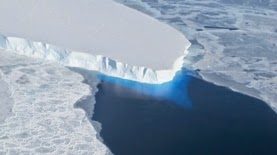Last month I brought into question the marketing for Mark Millar’s upcoming comic MPH. After weighing in the comments and opinions of comic fans and writers alike, it was a brief twitter conversation with journalist David Brothers that caused me to go back and reassess my issues with the original marketing.
David: “I read the piece & I can’t call the story till I see it. As far as marketing, the CREAM , reference read as tongue-in-cheek to me.”
Me: Yeah, I guess I could see that, maybe I’m off base.
David: “I get your concerns and you aren’t wrong to question them, but you don’t have a lot of evidence one way or another right now.”
Mr. Brothers was very correct on this point. Despite how things appeared I couldn’t make a judgement without having read the comic. Since the book comes out in May, I decided to give it a break.
So I went back on the Internet to look for more info on the series in order to prove my fears unfounded. Since it’s not out yet, maybe I’d find something that would make me want to buy it besides controversy.
What I learned was that MPH, as described by the mini-series’ creator, is supposed to be a view of the American Dream, which can be a nightmare for some. The main character, known as Roscoe, a young black man, is going to use these superspeed-granting drugs to go on a global crime spree.
In the preview, lyrics from the famous rap song C.R.E.A.M by the legendary Wu-Tang Clan were quoted to illustrate what the main protagonist’s motivations were through the use of drugs. This latest statement about the American Dream brings to mind rapper NaS’ song Street Dreams as well as the whole of ‘90s Hip-Hop, which in many ways embodied the idea of fast money whether through music or illegal activity.
I’m not saying that drug use in the U.S.A doesn’t exist, and I won’t say that black folks or anyone else for that matter don’t use and sell drugs here. But a lot of what I’m getting from this comic reads like “what I know about black people I learned from rap circa 1994”. None of what I just mentioned helps the fact that this budding super-criminal is a man of color, a group already associated with illegal activity and bad intentions nationwide, if not worldwide.
The fact that Mark Millar is a white writer could make this bad look for him in many eyes, and he really should’ve known better at least in terms of how sensitive of a subject this could become. I’m not going to throw out any harsh words at him, or brand him anything, (I’ll leave that for Black Twitter). My fear that this comic has racist undertones stems from the fact that the main character is a man of color from Detroit, a city already beleaguered with crime and gang violence, and he chooses to add to that crime when granted the ability to lessen it.
I don’t know anyone from Detroit except for a few creators who all seem like nice guys, and by no means am I saying that everyone in Detroit is a saint. But with all the white heroes throughout the years who have stumbled upon great power and acted completely responsibly with it, or even just got fed up and donned a mask to protect the streets, this lone black teen has to use his powers to commit crimes? Couldn’t he be a noble soul, tired of seeing senseless violence and watching his people slowly kill themselves?
I’m asking these questions because I really want to know why this couldn’t have been the case? Is Miles Morales enough to cover that base of “good black teen” while countless Caucasians with powers do the right thing? Are we as readers to believe that one group of people are inherently more noble than the other where the realm of fiction is concerned?
The origin of his powers are also another issue for me, and bring to mind two other characters. The first is former Young Avengers leader Elijah Bradley, a.k.a. Patriot, who gained his powers initially from Mutant Growth Hormone (MGH). Eli wasn’t a villain, but he almost became one after a drug-induced rampage forced his team to stop him.
The second character is Jasper Jenkins, a.k.a. The Bounce, who is a drug addict with superpowers and who oddly happens to be a hero. Why isn’t he robbing banks to get money for his habit?
So I spoke to my friend and mentor Karl Bollers, writer of the Eisner-nominated Watson and Holmes, a comic where though the heroes are black and though they have issues they do the right thing. While he thought the concept behind MPH was sensationalist and exploitative of prejudices, he also wondered if Millar was being satirical. That got me thinking about Millar’s unique view of America as a Scottish person.
When I watch all those infomercials…about how you can become a millionaire in your spare time, I get it! And I love that about America
- Mark Millar
If this is indeed satire — or just Millar’s take on the American Dream or a version of it — then it not only says something about how he may see black people, but how he sees Americans in general. The notion of the quick win or easy money is something that is at play in this book and while it still can be seen as offensive, it may also be a dark mirror shown to the face of American ideals and what they have become.
Crime has always been the original easy money scheme, and in a society where people can and have become rich and famous for nothing, someone using their powers for personal gain may not be far fetched.
Karl also reminded me of the story of X-Men and Alpha Flight member Northstar, who used his super speed to win in the athletic field. Here is another instance of a person with the same powers as Roscoe using his ability to get ahead but not in an explicitly criminal sense. Why couldn’t Roscoe use his abilities to build things quickly or improve his lot in life without need for a crime spree?
I can see why some folks wouldn’t find this offensive and before anyone starts with “If a black writer did this…” I’d be even more concerned because they should know better, I talk a bit about that in an old article I wrote here. This may not hit home for the majority of comic book fans, but I don’t need any more reasons for people like this to try and exclude or lampoon me from the realm of comics.
Racism still exists in comics, folks, and all the black heroes in mainstream comics — most of them rarely used — won’t stop the culture from latching onto something and having ill-intentioned fun with it.
Do I think Mark Millar is a racist? I don’t know him so I can’t make that statement, but I do know that he does things for shock value and while that could be the case here, somethings you just don’t need to do or must be careful about.
That being said, I’m still going to pick this comic up on the off chance that it is indeed a satire of the American Dream, or turns out to be something entirely different than I thought.
Tune in next time when the Word is…

Originally posted on Comics Bulletin













